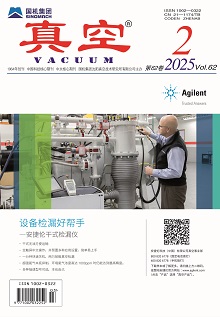|
|
Research and Development of the HEPS Storage Ring Vacuum System
DONG Haiyi, HE Ping, LI Qi, GUO Dizhou, WANG Xujian, MA Yongsheng, LIU Baiqi, HUANG Tao, ZHANG Lei, SUN Fei, LIU Tianfeng, TIAN Pilong, YANG Yuchen, YANG Qi, WANG Pengcheng, LIU Jiaming, LIU Shunming, SUN Xiaoyang, ZHU Bangle, TAN Biao
VACUUM
2025, 62 (2):
1-11.
DOI: 10.13385/j.cnki.vacuum.2025.02.01
HEPS (high energy photon source) is the 4th generation ring-based light source with a beam energy of 6 GeV and a beam current intensity of 200 mA. The HEPS accelerator consists of a linac, a booster, a storage ring, and three transport lines connecting them together. The storage ring serves as the core region of HEPS. In this paper, the characteristics of the storage ring vacuum system are reviewed, and the design and fabrication approach for some key vacuum components are detailed. The main challenges include extruding thin-walled CrZrCu vacuum chambers and coating NEG films on their inner surfaces. These are used to mitigate substantial heat loads induced by synchrotron radiation along the vacuum chamber walls and provide an effective pumping speed for conductance-limited vacuum pipes with an inner diameter of 22 mm. At present, the procurement of all the vacuum components has been completed. The installation of the storage ring vacuum system started in November 2023, and finished in July 2024. Vacuum sectors were baked and activated in-situ for the NEG films inside the vacuum chambers, an average static pressure of 5×10-8 Pa has been reached, which is better than the specification. The results verify the feasibility of the storage ring vacuum system from the design and fabrication of vacuum chambers, RF shielding bellows, photon absorbers, etc. to NEG coating with magnetron sputtering, installation, activation of NEG films in-situ, etc. After more than 20 days of conditioning, the beam current of the HEPS storage ring reached 12 mA, marking a milestone progress in the HEPS accelerator.
Reference |
Related Articles |
Metrics
|
|

